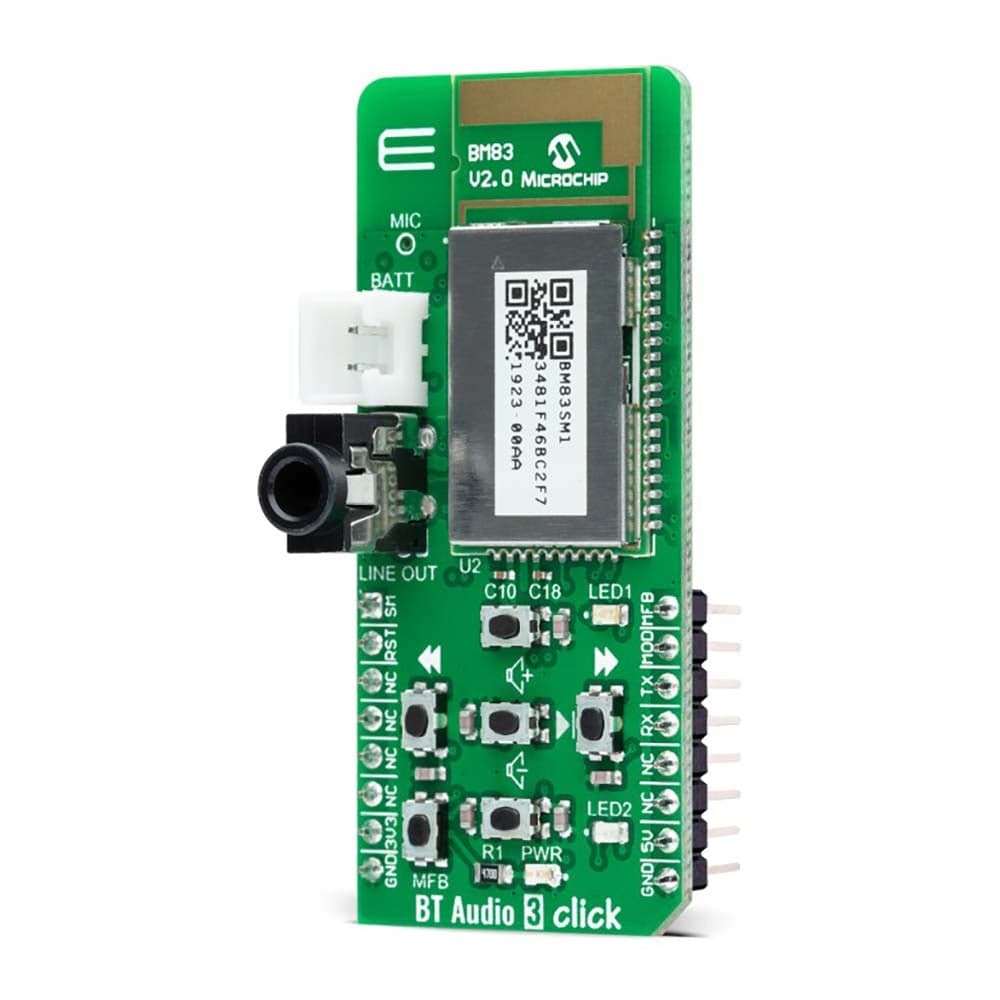
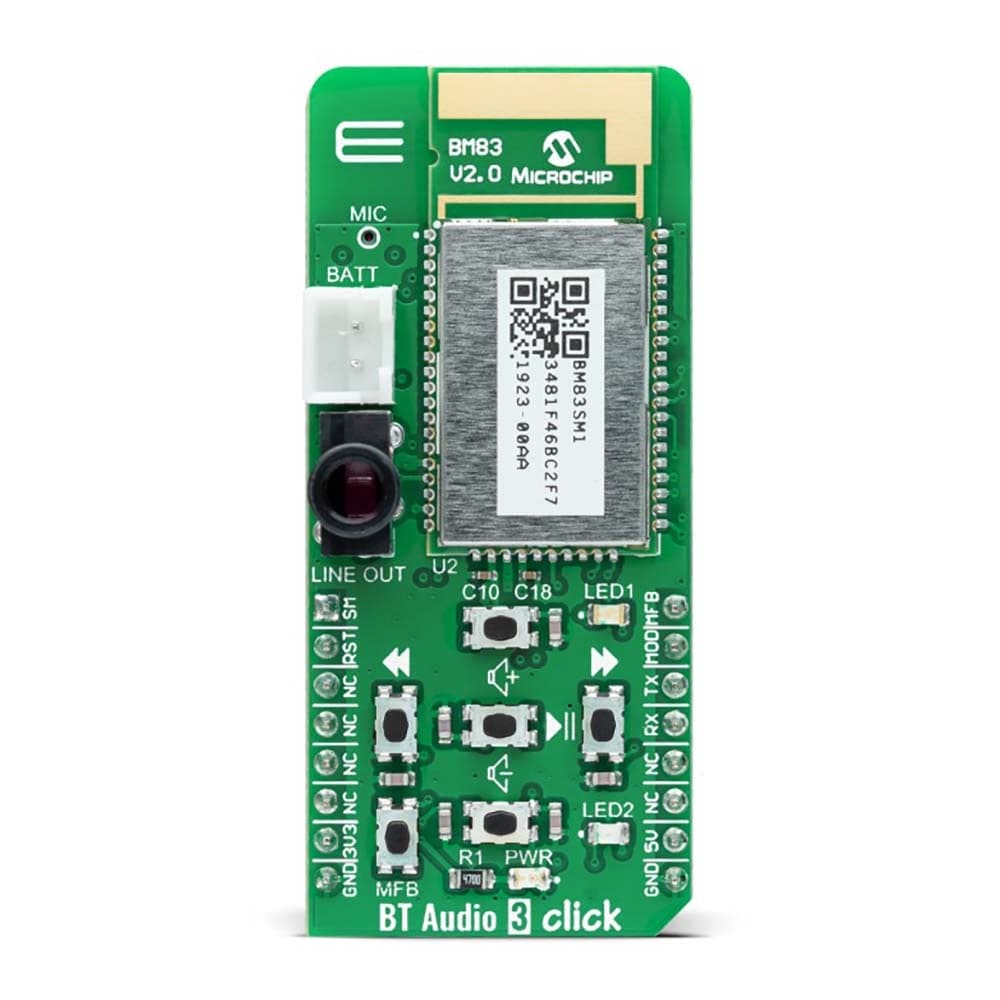
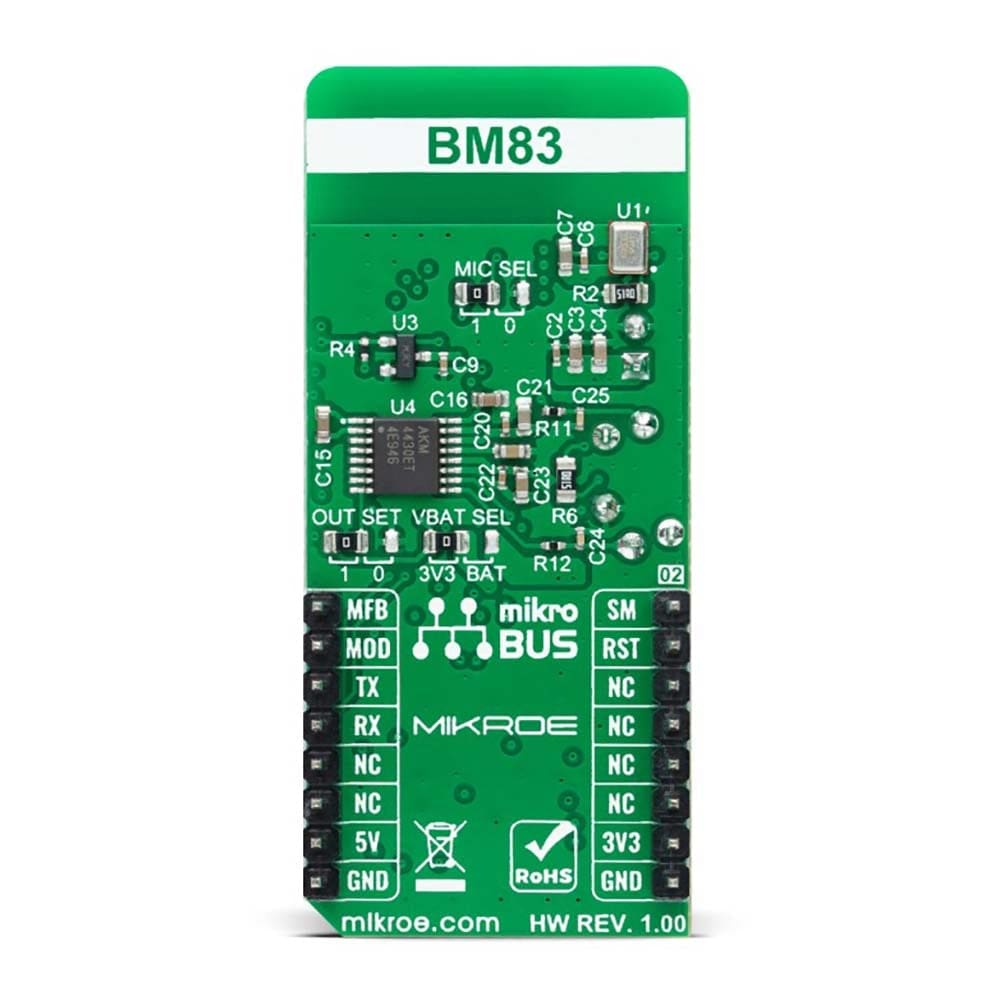
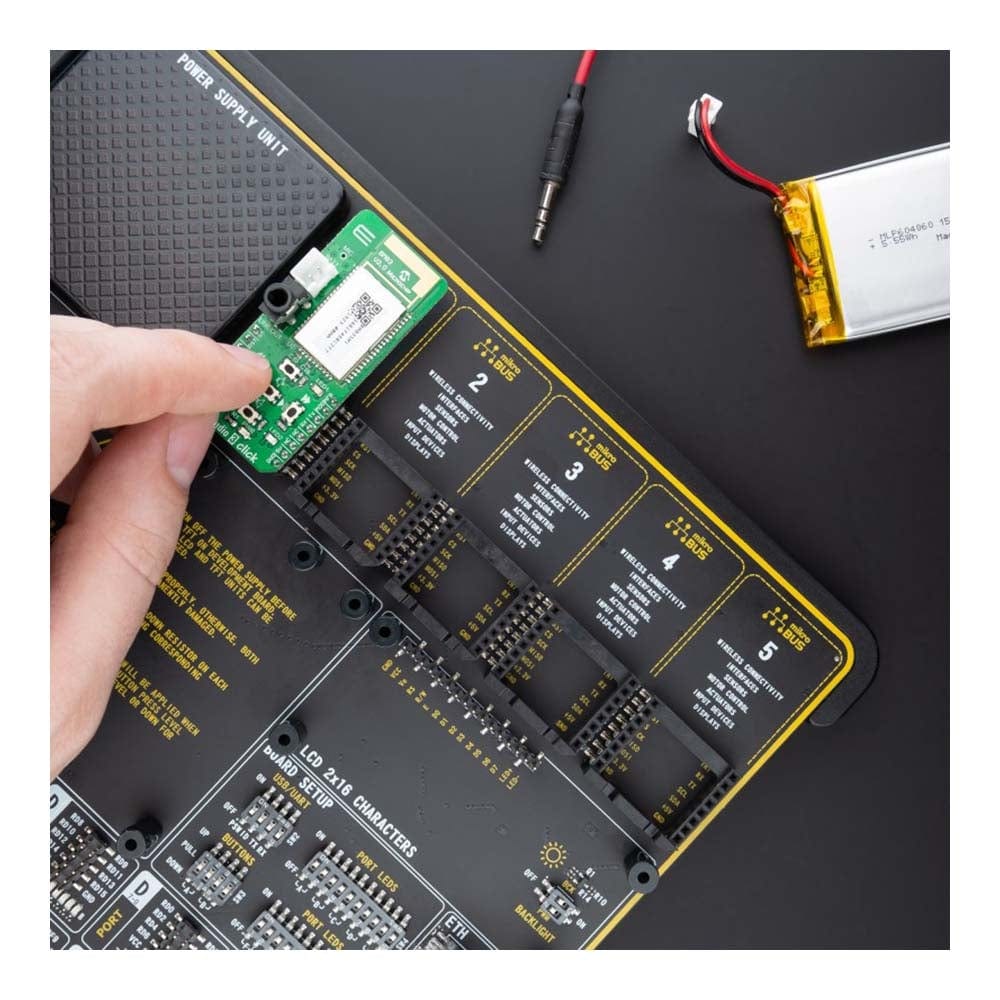
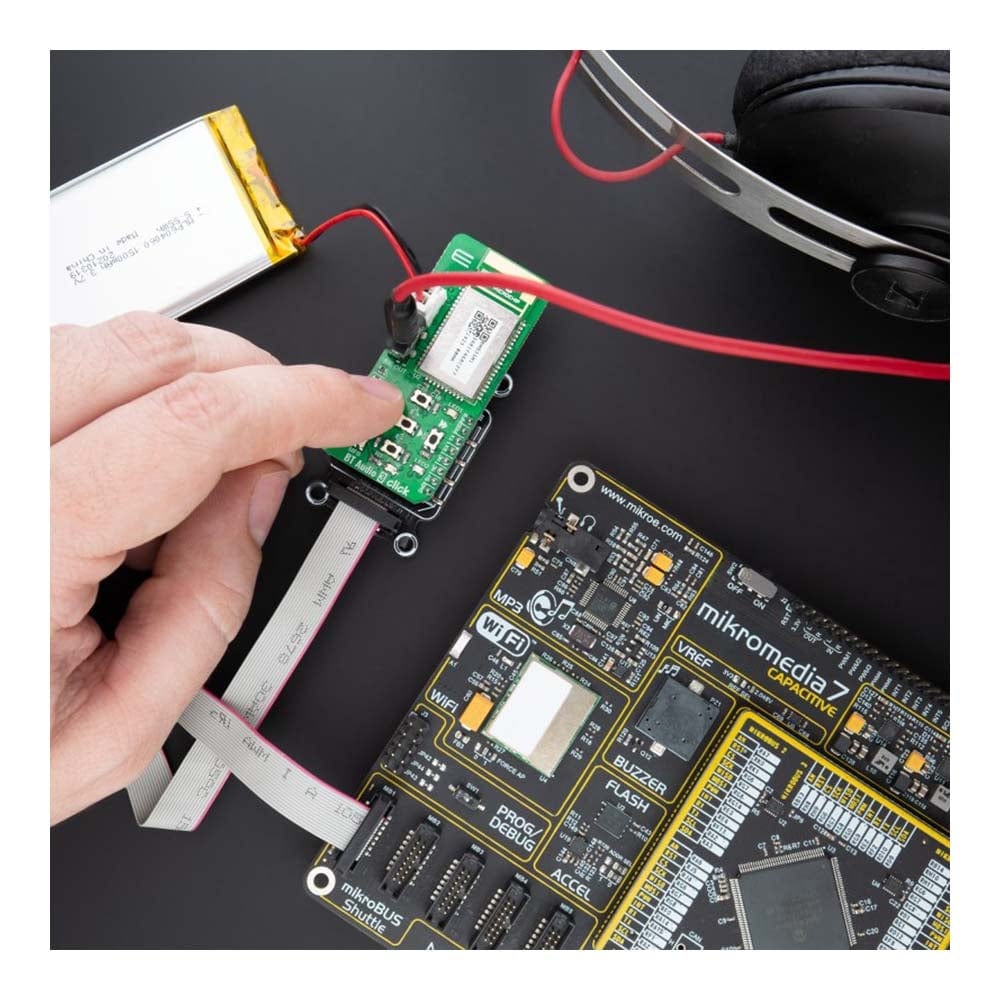
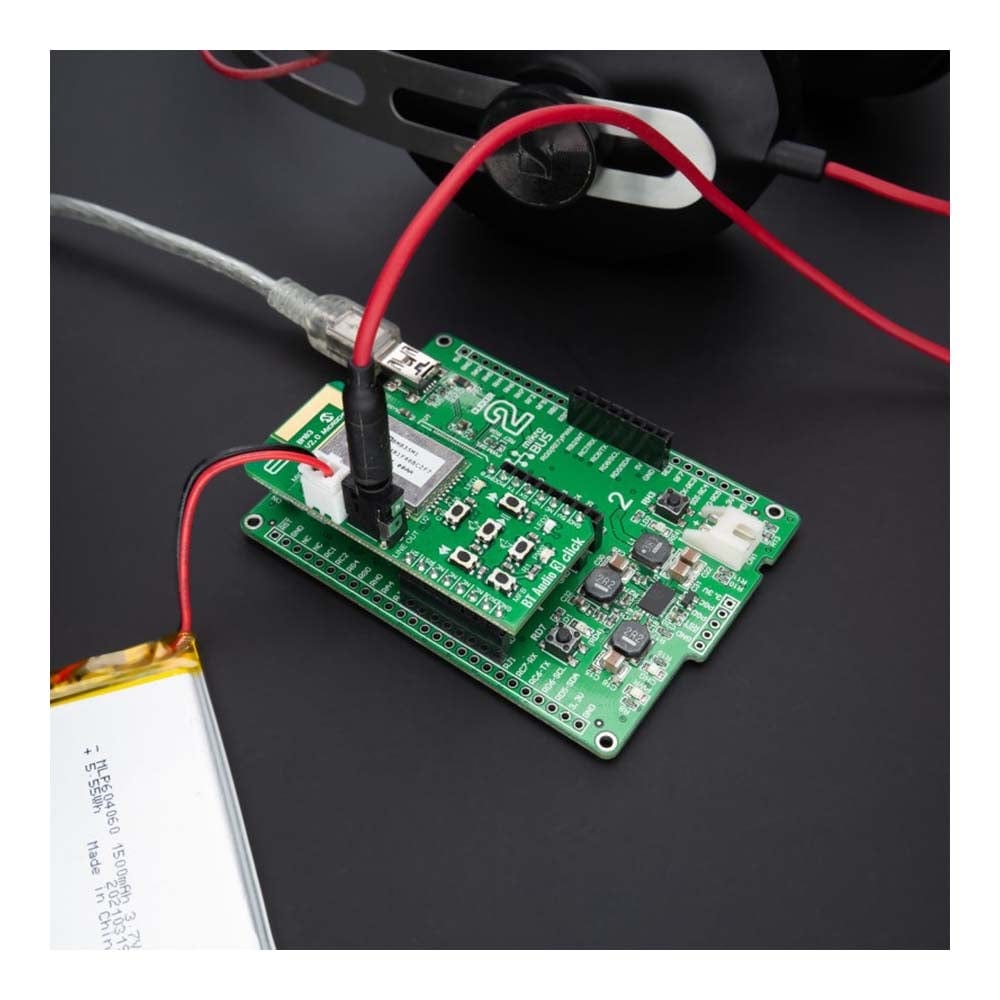
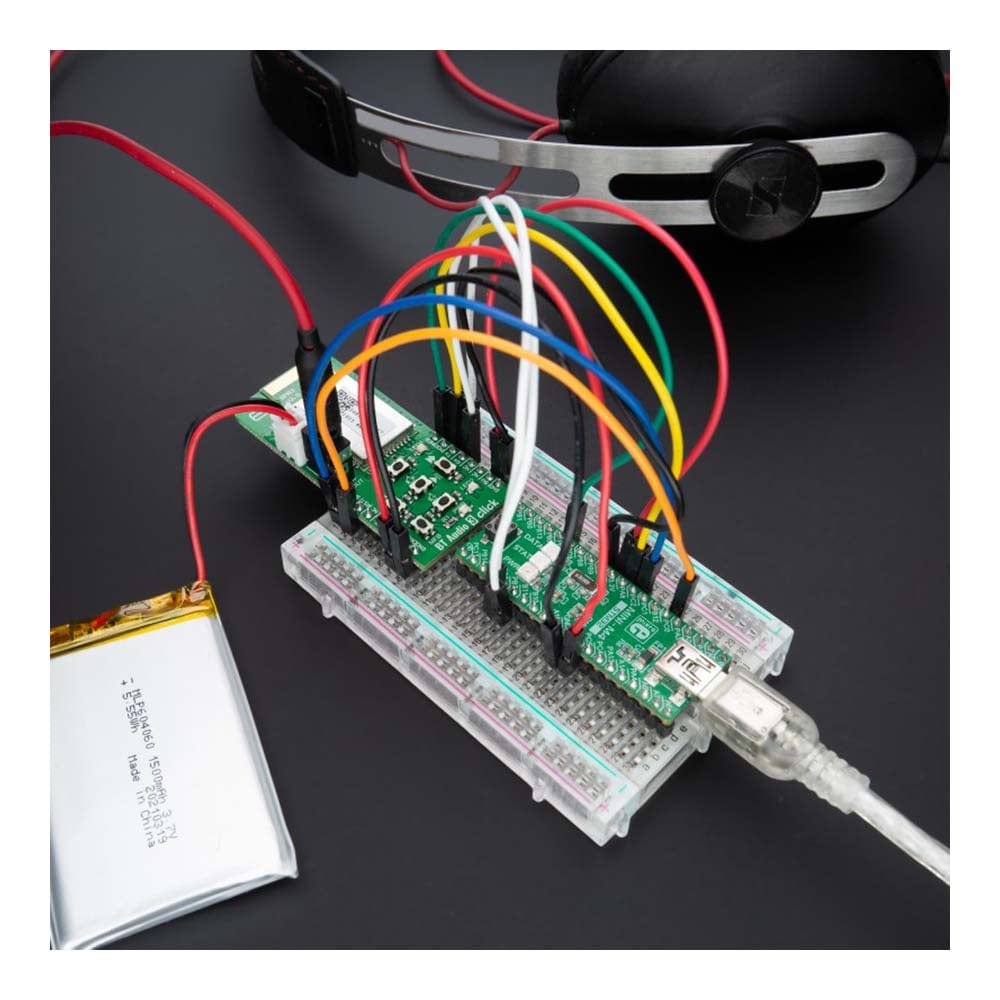
Overview
The BT Audio 3 Click Board™ is a compact add-on board with high-performing voice and audio post-processing capability for Bluetooth audio applications. This board features the BM83, a fully certified Bluetooth v5.0 stereo audio module from Microchip.
The BM83 contains an onboard Bluetooth stack and audio profiles and supports 24-bit/96 kHz high-resolution audio formats to enable high-fidelity wireless audio. An integrated Digital Signal Processor (DSP) decodes AAC and SBC codecs and executes advanced audio and voice processing such as Wide-Band (WB) speech, Acoustic Echo Cancellation (AEC), and Noise Reduction (NR). Configured in Host mode, the BM83 allows data processing via the UART interface, and in addition, comes with many additional features such as audio control buttons, onboard microphones, LED indicators, and more. This Click board™ is suitable for Bluetooth audio applications, more precisely, for a smartphone (source) streaming audio to a speaker.
The BT Audio 3 Click Board™ is supported by a mikroSDK compliant library, which includes functions that simplify software development. This Click board™ comes as a fully tested product, ready to be used on a system equipped with the mikroBUS™ socket.
Downloads
La carte BT Audio 3 Click Board™ est une carte complémentaire compacte dotée de capacités de post-traitement de la voix et de l'audio hautes performances pour les applications audio Bluetooth. Cette carte est équipée du BM83, un module audio stéréo Bluetooth v5.0 entièrement certifié de Microchip.
Le BM83 contient une pile Bluetooth intégrée et des profils audio et prend en charge les formats audio haute résolution 24 bits/96 kHz pour permettre un son sans fil haute fidélité. Un processeur de signal numérique (DSP) intégré décode les codecs AAC et SBC et exécute un traitement audio et vocal avancé tel que la parole à large bande (WB), l'annulation de l'écho acoustique (AEC) et la réduction du bruit (NR). Configuré en mode hôte, le BM83 permet le traitement des données via l'interface UART et est en outre doté de nombreuses fonctionnalités supplémentaires telles que des boutons de commande audio, des microphones intégrés, des indicateurs LED, etc. Cette carte Click™ convient aux applications audio Bluetooth, plus précisément à un smartphone (source) diffusant de l'audio vers un haut-parleur.
La carte Click Board™ BT Audio 3 est prise en charge par une bibliothèque compatible mikroSDK, qui comprend des fonctions qui simplifient le développement logiciel. Cette carte Click Board™ est un produit entièrement testé, prêt à être utilisé sur un système équipé du socket mikroBUS™.
| General Information | |
|---|---|
Part Number (SKU) |
MIKROE-4947
|
Manufacturer |
|
| Physical and Mechanical | |
Weight |
0.02 kg
|
| Other | |
Country of Origin |
|
HS Code Customs Tariff code
|
|
EAN |
8606027389610
|
Warranty |
|
Frequently Asked Questions
Have a Question?
Be the first to ask a question about this.







